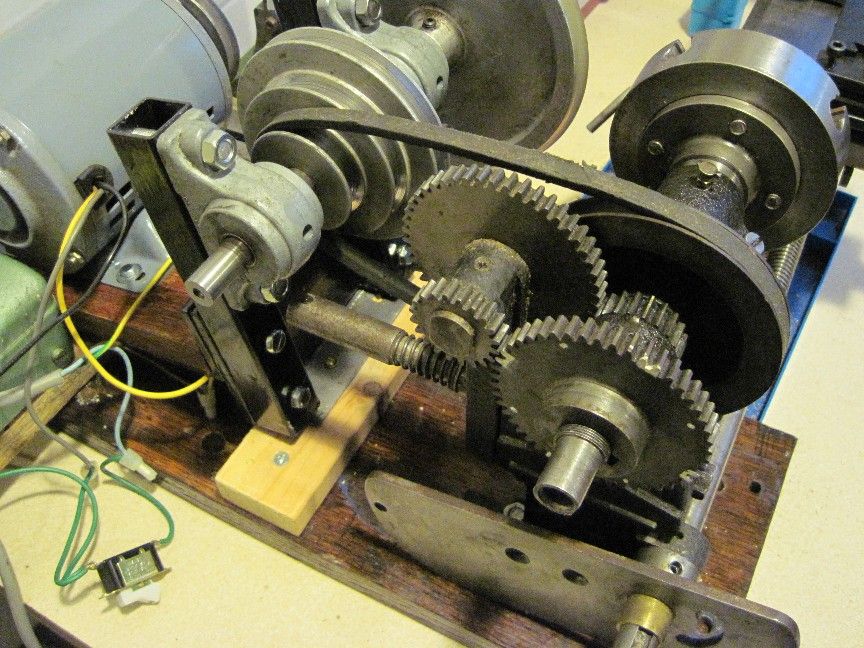Posted by Andy Thompson 3 on 06/07/2021 00:48:53:
P.S. Do you think this motor safe to use and should I do anything to service it.
No-one knows! On the plus side, old motors are robust and unlikely to fail dangerously: there's a good chance it's OK. But approach with caution! Old motors are old. The bearings may be worn out or gummed up, connectrions corroded, insulation damaged, capacitor(s) sick, or centrifugal switch jammed.
Old motors can be serviced, but much depends on what's wrong. Replacing bearings and removing grot is easy enough; after that it gets complicated. It's possible to rewind a motor yourself, but so tedious and time consuming it's better to have the job done by a specialist. Replacing the motor is likely to be quicker, easier and cheaper.
Ancient electrics should always be approached cautiously. Older machines may be wired with rubber insulated wiring: as this perishes, replace it. They often had no emergency stop or No Volt Release, and perhaps were controlled from the mains socket. This is OK for initial testing, but not good for regular use. As combined NVR/Emergency stop switches are highly affordable, there's no reason not to fit one. Anyway:
- Check the wiring for damage and loose connections.
- Before proceeding further, consider your personal level of understanding, technical aptitude, and willingness to learn. For many hobbyists, there is no great mystery about domestic electricity; they understand the risks. Others focus on the mechanical side and have zero understanding or interest in electrics; they are much more likely to be shocked! Avoid accidents due to ignorance by understanding your limitations.
- Important! To avoid electrocution, confirm continuity from the earth pin on the plug to all the exposed metal work on the lathe: motor case, headstock, and bed etc. Buy or borrow a multi-meter.
- Make sure the motor turns freely by hand before applying power.
- Check the fuse is the correct size: 5A should do
- Without touching the lathe or motor, switch on and see what happens! There's a very good chance the motor will spin up without drama. Let it run for 15 minutes to ensure it doesn't overheat and turn off if any trouble emerges. Bad things (post again if they happen):
- Plug Fuse blows and/or house RCD pops
- Smoke, sparks, loud buzzing, or sizzling noises
- Motor doesn't start
- Motor runs erratically
- Motor slowly overheats
- Tips.
- As most 250Vac shocks are relatively mild, it's easy to become gung-ho about their dangers. Don't.
- An electric shock received whilst standing on a concrete floor is more severe than what happens on a wooden or carpeted floor. Worse if the concrete is damp.
- Shock is proportional to contact area. Pressing a hand flat onto a live motor case is far more dangerous than a tapping it with a finger tip.
- Shocks are much worse when sweaty.
- Chaps trained to work on live equipment are told to always keep one hand in a pocket. This prevents current passing across the heart, which is stopped by a few milliamps.
Most single-phase motors are unsuitable for electronic speed control.
In my opinion, all single-phase motors are an inferior complicated compromise. Several things to go wrong, poor starting torque, they dislike being stopped and started, difficult to speed control, mildly inefficient, and they vibrate. Their only advantage is they run off ordinary domestic electricity; still useful today, and there were no affordable alternatives to them in 1947! In 2021 it's worth upgrading to a 3-phase motor with VFD if the motor is shot. Though if the old motor works, will be 'good-enough'.
Speeds. Top speed at the chuck is restricted by the lathe's plain bearings. Assuming they're in good condition I suggest no more than 1000rpm, 800 if nervous. Middle pulley, about half that, slow pulley about 100rpm. (All approximate.) The rpm needed depends on the diameter of work being turned because it's the speed of the cutter at the surface that matters. Small diameter work requires high speed, big diameters need lower rpm to get the same surface speed. VFD's are handy because they allow operators to tweak speed for best results. Backgear to get slower than 100rpm, is good for threading, winding coils, and any job requiring extra torque (turning power).
Dave
Gerry Hedderwick.
















